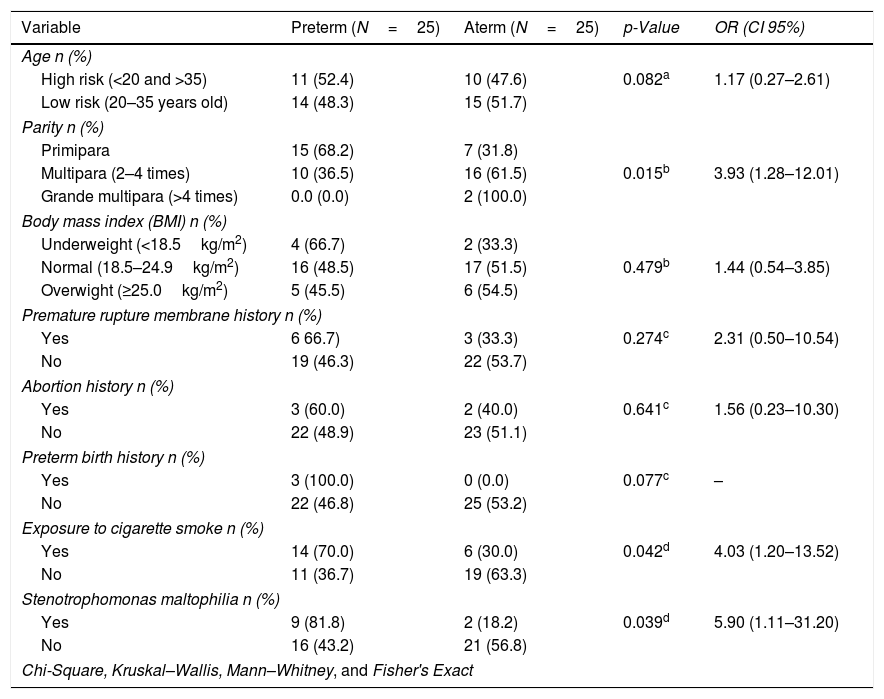This study aimed to determine the relationship of parity, exposure to cigarette smoke, and the presence of bacteria Stenotrophomonas maltophilia with the incidence of preterm labor.
MethodIt was a cross-sectional study, the sampling was carried out using a purposive sampling technique for maternity women at the Siti Fatimah Makassar Mother and Child Hospital, Siti Khadija I Makassar Mother and Child Hospital, and Makassar City Regional General Hospital in June until August 2019. The study sample consisted of 50 post-partum mothers and their placenta, consisting of 25 preterm mothers and 25 term mothers. Criteria for respondents in this study were maternal pregnancies at gestational age>22–36 weeks for the case group, and ≥37 weeks for the control group while the exclusion criteria were mothers with hypertension, preeclampsia, placenta previa, placental abruption, and HIV. Respondent characteristics were collected using a checklist sheet. Bacteria on the placenta were detected using 16S rRNA Polymerase Chain Reaction (PCR).
ResultsCharacteristics of age, Body Mass Index (BMI), premature rupture of membrane History, abortion history, and preterm birth history did not have significant relationship with the incidence of preterm labor, while parity (OR=3.03, 95% CI: 1.2–12.0), cigarette smoke exposure (OR=4.03, 95% CI: 1.2–13.5), Stenotrophomonas maltophilia bacteria (OR=5.90, 95% CI: 1.11–31.20) significantly increases the risk of preterm labor.
ConclusionParity, exposure to cigarette smoke, and the bacteria Stenotrophomonas maltophilia are considered as predisposing factors that are closely related to the incidence of preterm labor.
Artículo
Comprando el artículo el PDF del mismo podrá ser descargado
Precio 19,34 €
Comprar ahora







